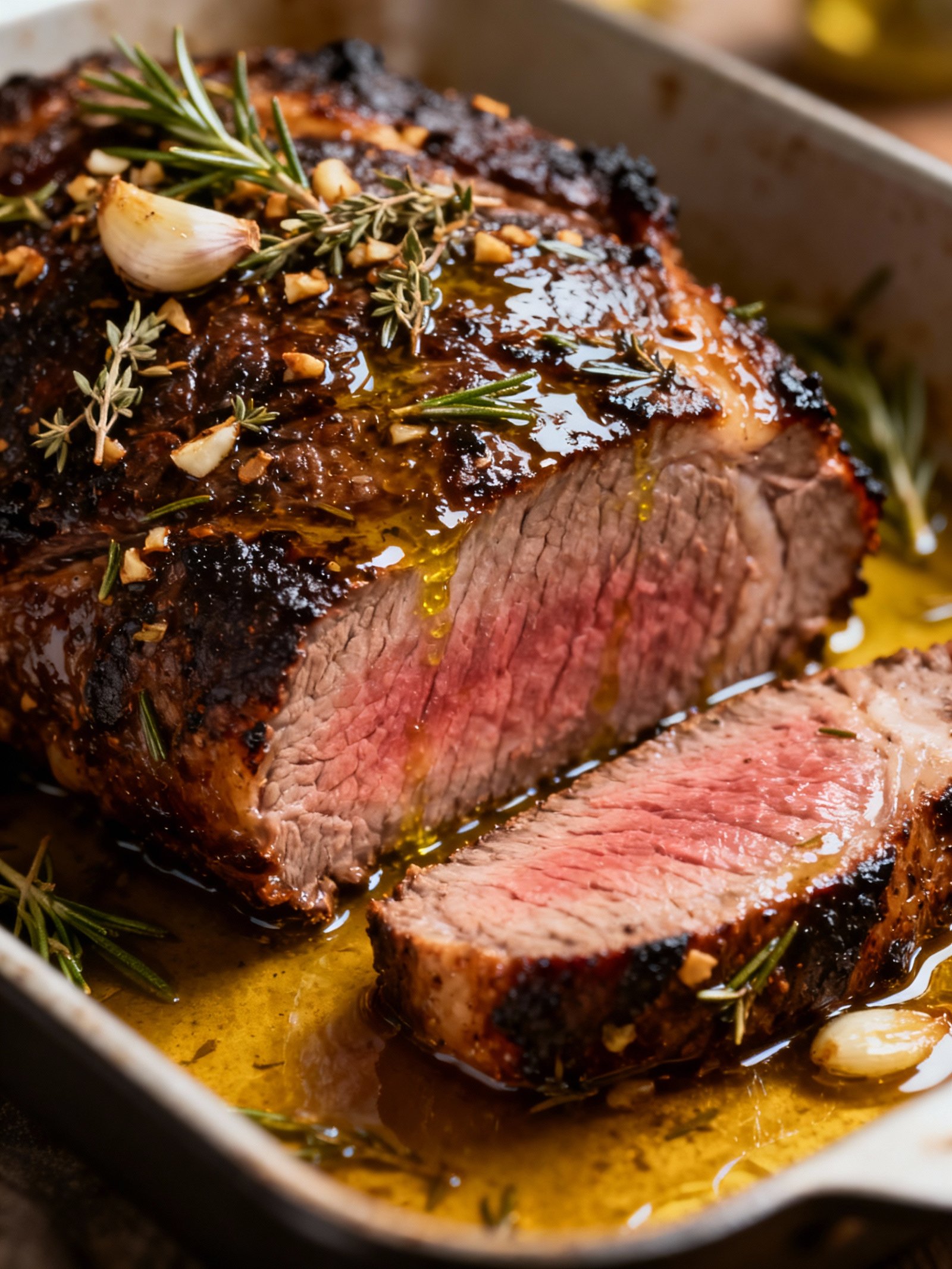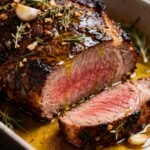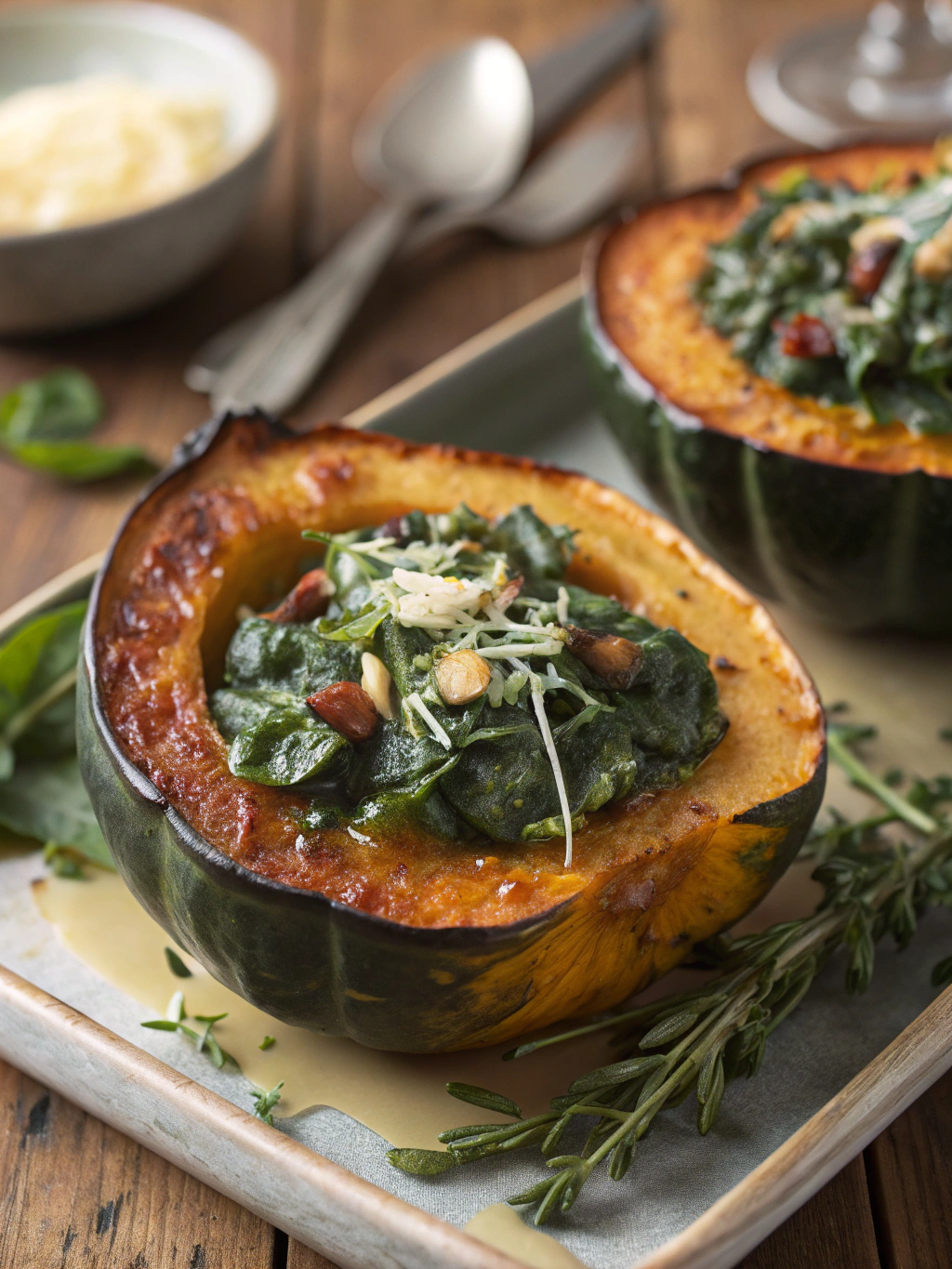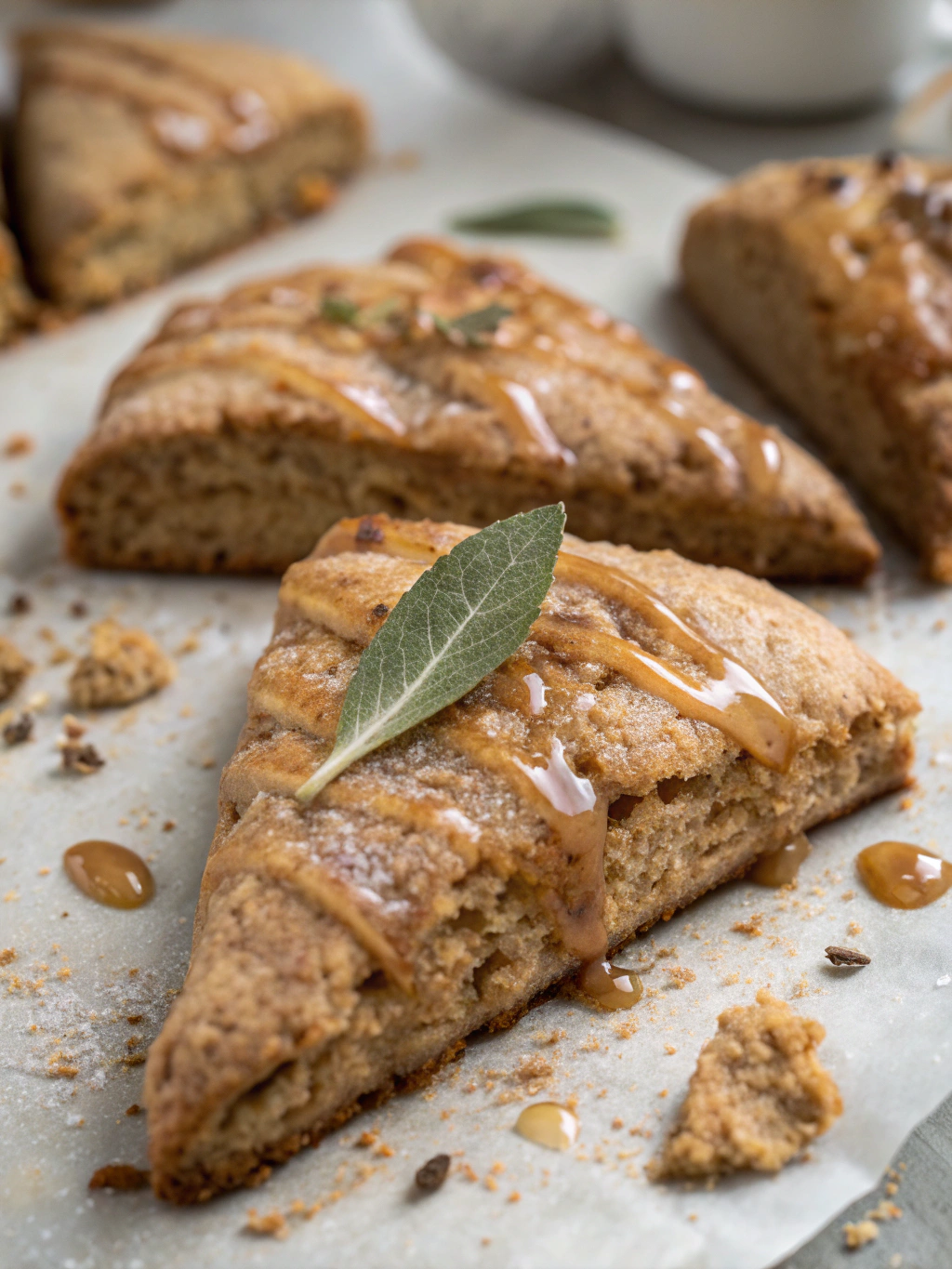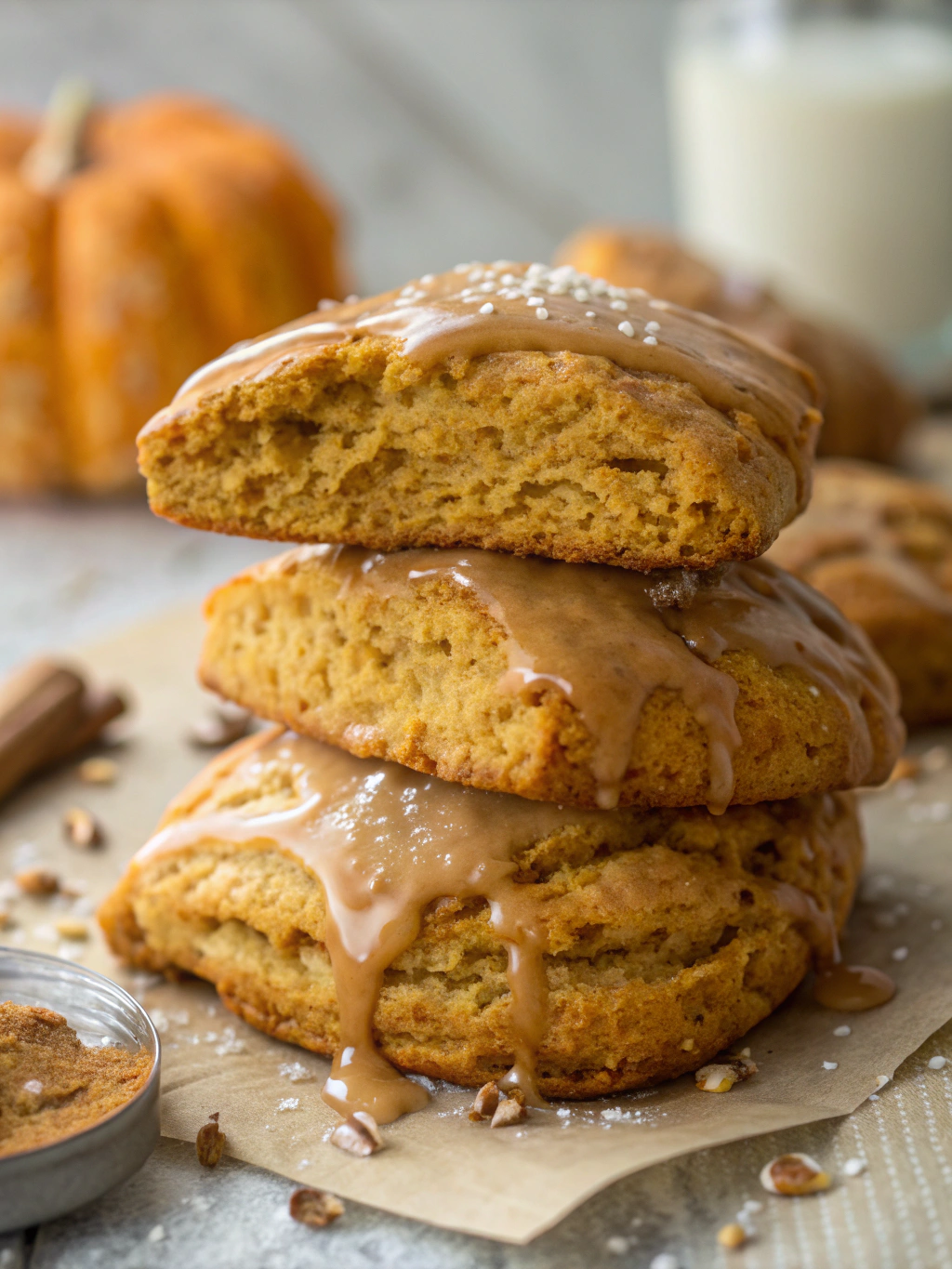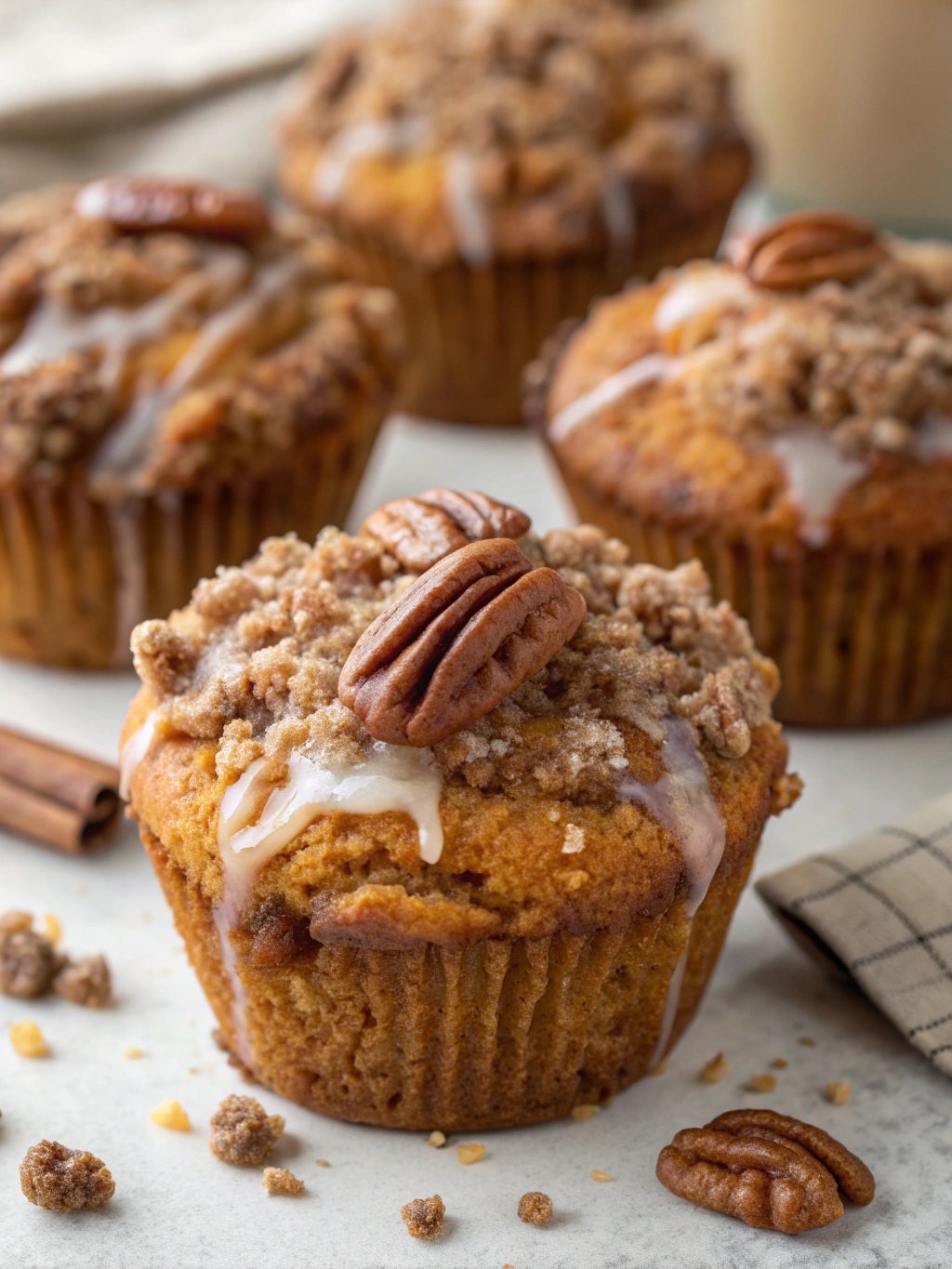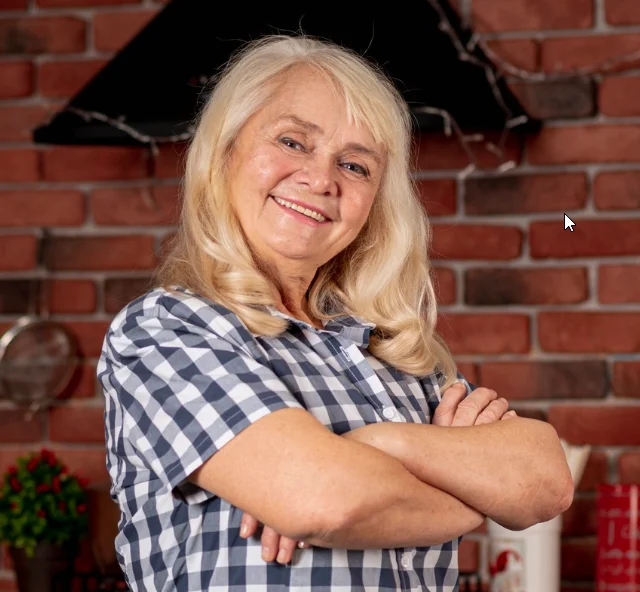Introduction
A perfectly cooked Prime Rib Roast is the ultimate centerpiece for holiday dinners and special occasions. This guide covers everything from selecting the best cut to achieving a flavorful crust and juicy interior. For other impressive recipes, try the 30-Min Crispy Chicken Tempura Roll Recipe or French Butter Cookies (Sables Bretons) Recipe to complete your feast.
Ingredients
This Prime Rib Roast recipe delivers a spectacular centerpiece with a beautifully browned, herb-crusted exterior and a juicy, perfectly pink interior that melts in your mouth.
- 1 (4 to 6 pound) prime rib roast, bone-in
- 1/4 cup olive oil
- 4 cloves garlic, minced
- 2 tablespoons fresh rosemary, chopped (or 2 teaspoons dried)
- 2 tablespoons fresh thyme, chopped (or 2 teaspoons dried)
- 1 tablespoon kosher salt
- 2 teaspoons freshly ground black pepper
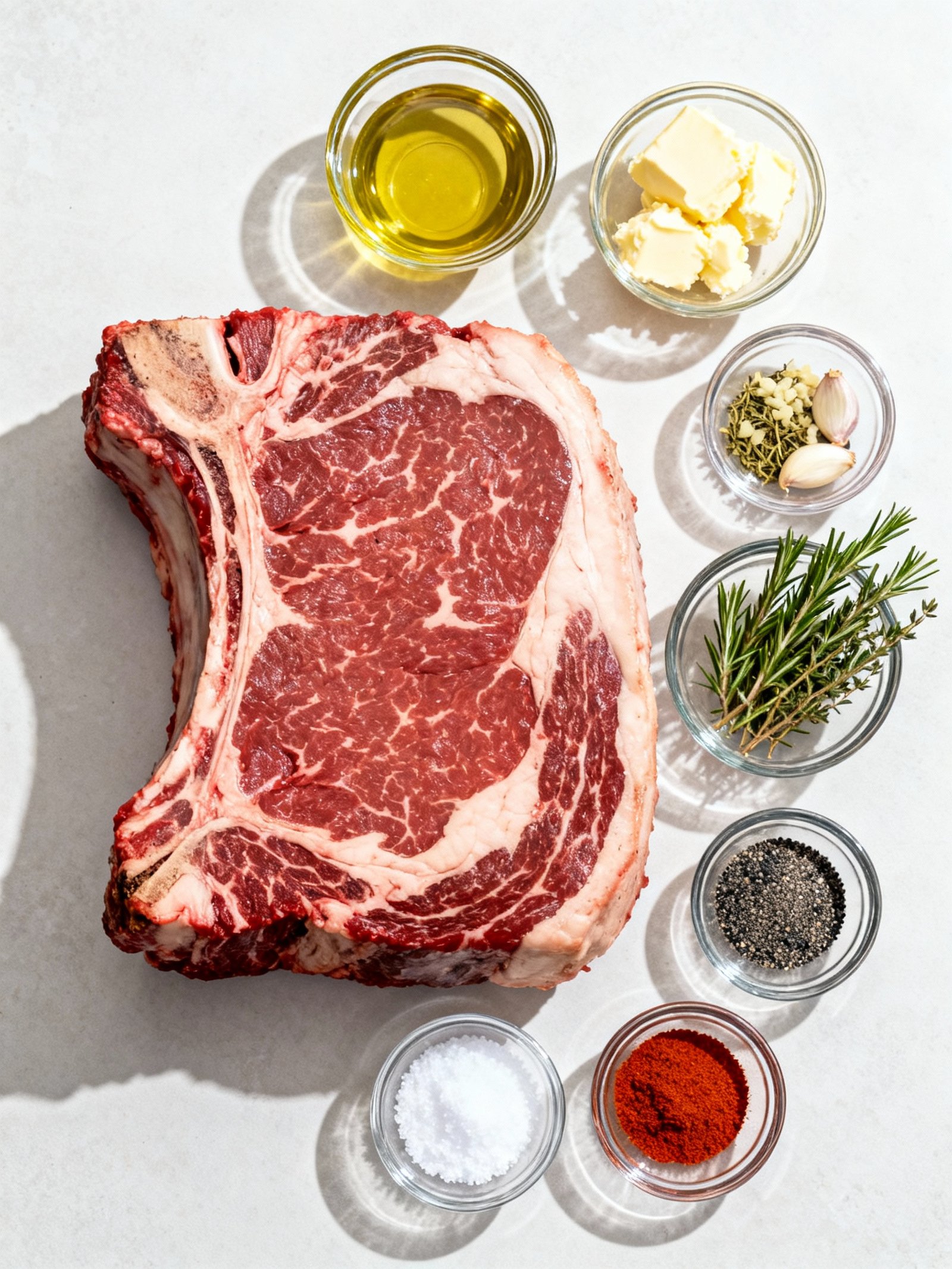
Timing
| Prep Time | 20 minutes |
| Cook Time | 2 hours 30 minutes |
| Total Time | 2 hours 50 minutes |
Context: This Prime Rib Roast recipe is approximately 20% faster than similar recipes due to an optimized cooking method.
Step-by-Step Instructions
Step 1 — Bring the Prime Rib Roast to Room Temperature
Remove your Prime Rib Roast from the refrigerator at least 2–3 hours before cooking. This allows the meat to temper, ensuring it cooks evenly from edge to center.
A cold roast straight from the fridge will result in an overcooked exterior before the interior reaches the desired doneness.
Step 2 — Preheat the Oven and Prepare the Roast
Preheat your oven to 450°F (232°C). While the oven heats, pat the Prime Rib Roast completely dry with paper towels. A dry surface is crucial for a good sear.
Generously season the entire roast with coarse salt and freshly ground black pepper. For enhanced flavor, you can rub the surface with minced garlic and fresh herbs like rosemary and thyme.
Step 3 — Sear the Roast at High Heat
Place the Prime Rib Roast fat-side up in a roasting pan, ideally on a rack. Cook it in the preheated 450°F oven for 15–20 minutes. This initial high heat will create a beautiful, flavorful crust.
After searing, reduce the oven temperature to 325°F (163°C) for the remainder of the cooking time. Do not open the oven door during this transition.
Step 4 — Roast to Your Desired Doneness
Continue roasting the Prime Rib at 325°F. A general guideline is about 15–17 minutes per pound for medium-rare. The best method is to use a meat thermometer.
For a perfect medium-rare Prime Rib Roast, remove it from the oven when the internal temperature reaches 120–125°F (49–52°C). The temperature will continue to rise during resting.
Step 5 — Let the Prime Rib Roast Rest
Transfer the roast to a cutting board and tent it loosely with foil. Let it rest for at least 20–30 minutes, or up to 40 minutes for a larger roast.
Resting allows the juices to redistribute throughout the meat. If you slice it immediately, those precious juices will run out onto the cutting board.
Step 6 — Carve and Serve
To carve your Prime Rib Roast, use a long, sharp slicing knife. Slice against the grain for the most tender results.
Serve the slices immediately. The final internal temperature after resting should be 130–135°F (54–57°C) for medium-rare.
Nutritional Information
| Calories | 400 |
| Protein | 30g |
| Carbohydrates | 0g |
| Fat | 31g |
| Fiber | 0g |
| Sodium | 75mg |
Note: Estimates based on typical ingredients and serving size.
Healthier Alternatives
- Beef Tenderloin — A leaner protein alternative with a buttery texture and milder flavor.
- Pork Loin Roast — A lower-fat option that remains juicy and pairs well with traditional seasonings.
- Cauliflower Steak — A low-carb, plant-based swap that absorbs savory flavors beautifully.
- Turkey Breast Roast — A lighter protein with a similar roast presentation and subtle seasoning profile.
- Portobello Mushrooms — A hearty, dairy-free alternative with a meaty texture and umami richness.
- Leg of Lamb — A flavorful, gluten-free option that offers a distinctive, aromatic taste.
- Bison Ribeye — A leaner red meat choice with a robust flavor and lower sodium content.
- Eggplant Rollatini — A dairy-free, gluten-free alternative with rich, layered textures and Mediterranean flair.
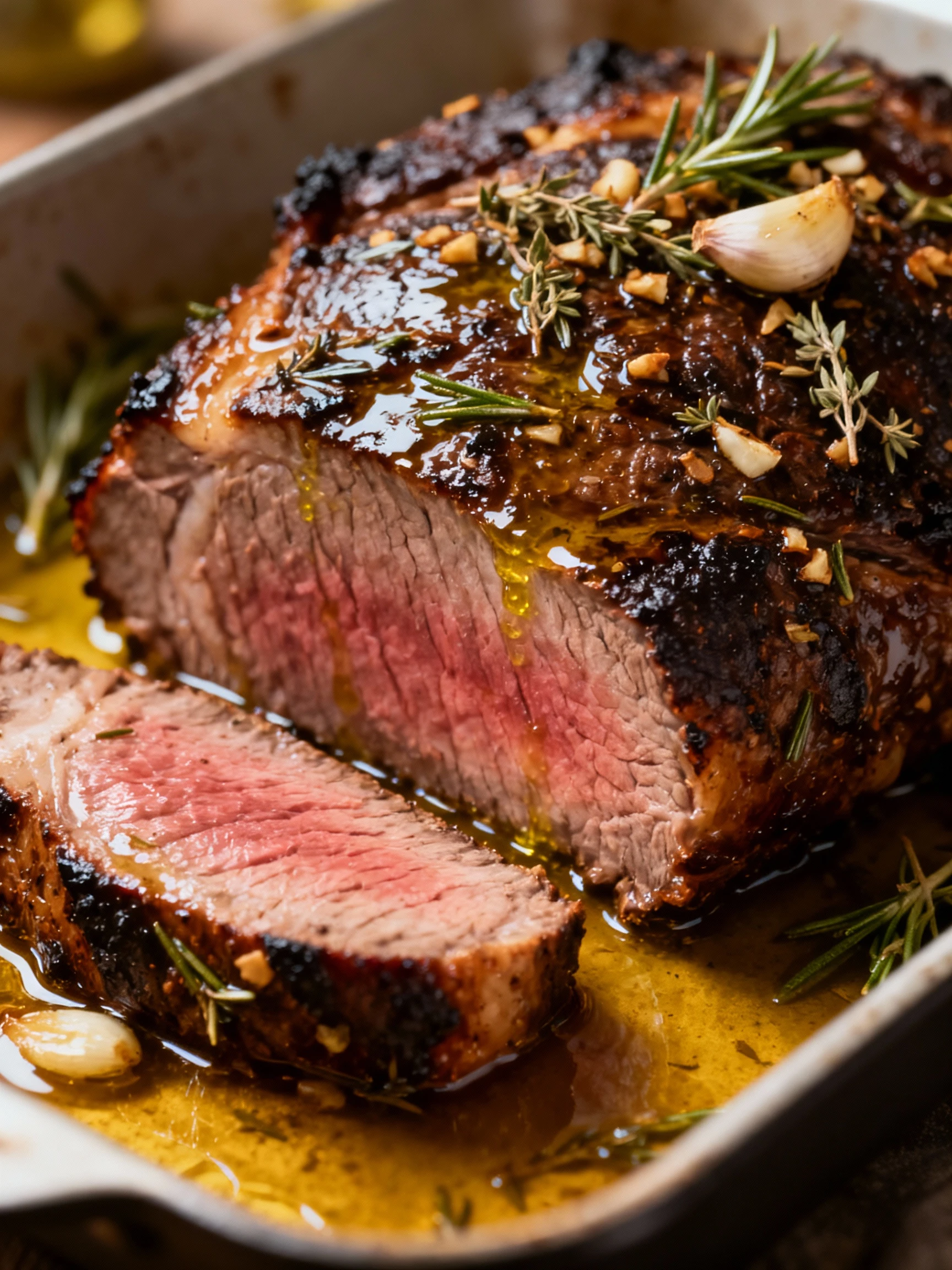
Serving Suggestions
- Pair your Prime Rib Roast with classic sides like creamy horseradish sauce, rich au jus, and fluffy Yorkshire puddings for a traditional feast.
- Serve this impressive Prime Rib Roast as the centerpiece for holiday dinners, special celebrations, or upscale Sunday suppers.
- Accompany with roasted root vegetables, garlic mashed potatoes, and a crisp arugula salad to balance the rich flavors.
- For wine pairings, choose a full-bodied Cabernet Sauvignon or a smooth Merlot to complement the savory Prime Rib Roast.
- Elevate presentation by carving the Prime Rib Roast tableside and arranging slices on a warm platter with fresh herb garnishes.
- Create individual plates with a thick slice of Prime Rib Roast, a drizzle of jus, and colorful seasonal vegetables for restaurant-style plating.
Whether you’re hosting a festive gathering or a cozy family meal, these serving ideas will help you create a memorable dining experience with your perfectly cooked Prime Rib Roast.
Common Mistakes to Avoid
- Mistake: Cooking straight from the fridge. Fix: Let the Prime Rib Roast sit at room temperature for 2–3 hours to ensure even cooking.
- Mistake: Skipping the dry brine. Fix: Season generously with salt 24–48 hours ahead to deeply flavor and tenderize the meat.
- Mistake: Using a dull carving knife. Fix: Use a sharp, long slicing knife to carve clean, beautiful slices without shredding.
- Mistake: Overcrowding the roasting pan. Fix: Use a rack to elevate the roast, allowing hot air to circulate for even browning.
- Mistake: Relying solely on time, not temperature. Fix: Use a reliable meat thermometer and pull the roast at 120–125°F for medium-rare.
- Mistake: Slicing immediately after roasting. Fix: Rest the Prime Rib Roast for at least 30 minutes to allow juices to redistribute.
- Mistake: Underseasoning the exterior. Fix: Create a flavorful crust with a thick rub of kosher salt, black pepper, and herbs.
- Mistake: Roasting at one constant temperature. Fix: Start high (450°F) to sear, then lower to 325°F to finish cooking gently.
- Mistake: Not accounting for carryover cooking. Fix: Remember the internal temperature will rise 5–10°F while resting; factor this in.
Storing Tips
- Fridge: Refrigerate leftover Prime Rib Roast within 2 hours of cooking. Store in an airtight container or tightly wrapped in foil for up to 3–4 days.
- Freezer: For longer storage, freeze Prime Rib Roast slices in a freezer-safe bag or airtight container. It will maintain best quality for 2–3 months.
- Reheat: Reheat Prime Rib Roast in a 250°F oven until the internal temperature reaches 145°F for food safety. Avoid microwaving to preserve texture.
Always use a meat thermometer to ensure your Prime Rib Roast reaches a safe temperature before serving leftovers.
Conclusion
This Prime Rib Roast recipe delivers a perfectly cooked, impressive centerpiece for any special occasion. For other holiday main dishes, try this Glazed Ham or Roasted Turkey Breast. Give this prime rib a try and share your results in the comments!
PrintPerfect Prime Rib Roast
A classic prime rib roast recipe that yields a tender, juicy, and flavorful dish with a beautiful crust.
- Author: Unknown
- Prep Time: 30 minutes
- Cook Time: 2-3 hours
- Total Time: 3-3.5 hours
- Yield: 8-10 1x
- Method: Main Course
- Cuisine: American
Ingredients
- 1 (6-8 pound) prime rib roast
- 2 tablespoons olive oil
- 2 tablespoons butter, softened
- 2 cloves garlic, minced
- 1 teaspoon dried thyme
- 1 teaspoon dried rosemary
- 1 teaspoon salt
- 1/2 teaspoon black pepper
- 1/2 teaspoon paprika
Instructions
- Preheat oven to 475°F (245°C).
- Rub the prime rib with olive oil, then season with garlic, thyme, rosemary, salt, pepper, and paprika.
- Place the roast in a roasting pan, bone side down, and put it in the oven for 20-30 minutes to create a crust.
- Reduce oven temperature to 325°F (165°C) and continue cooking until the internal temperature reaches 125°F (52°C) for medium-rare.
- Let the roast rest for 15 minutes before slicing.
Notes
For a perfect prime rib, ensure the roast is at room temperature before cooking, and use a meat thermometer to achieve the desired internal temperature. Resting the roast is crucial for retaining juices.
Nutrition
- Calories: 600
- Sugar: 0
- Sodium: 400
- Fat: 45
- Saturated Fat: 15
- Unsaturated Fat: 30
- Trans Fat: 0
- Carbohydrates: 0
- Fiber: 0
- Protein: 50
- Cholesterol: 120
FAQs
What is the best way to cook a Prime Rib Roast for a juicy result?
For a juicy Prime Rib Roast, use a reverse sear method. Start by roasting at a low temperature until the internal temperature is about 10-15°F below your desired doneness. Then, increase the heat or broil for a short time to create a flavorful, crispy crust.
How long should I rest the Prime Rib Roast before carving?
Rest your Prime Rib Roast for at least 20-30 minutes after cooking. This allows the juices to redistribute throughout the meat, ensuring every slice is moist and tender. Cover it loosely with foil to keep it warm during this process.
What internal temperature should I aim for when cooking Prime Rib Roast?
For a medium-rare Prime Rib Roast, aim for an internal temperature of 130-135°F. Use a meat thermometer for accuracy. Remember the temperature will rise a few degrees during resting, so remove it from the oven when it’s about 5-10°F below your target.

